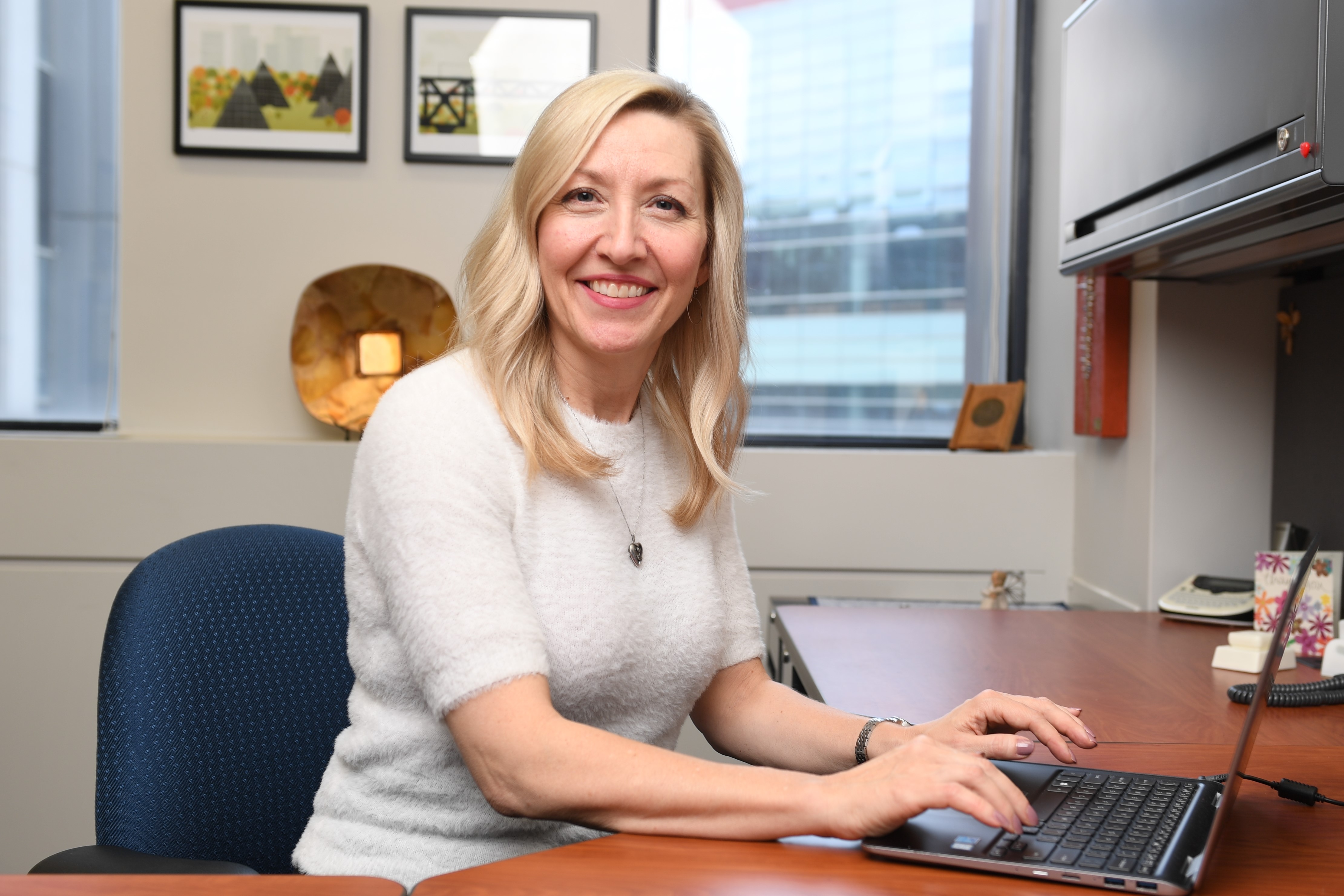Jana Rieger is a rehabilitation medicine researcher, entrepreneur and novelist who's using pocket-sized technology to empower cancer and stroke patients.
True Angle Medical Technologies Inc., the company Jana founded with her U of A research colleagues Dylan Scott and Gabriela Constantinescu, was named Edmonton Startup of the Year by the National Angel Capital Organization (NACO). True Angle is a member of the University of Alberta Health Hub & Accelerator community. The company was recognized for launching Mobili-T, a swallowing exercise device and mobile platform, into the United States market last fall. The Mobili-T allows patients to practise exercises from home while receiving real-time feedback about their muscle activity. They can share all this with their speech-language pathologist, if they choose to.
We chatted with Jana to learn how she gets her ideas off the ground—and why she’s glad she disregarded a certain piece of advice early in her career.
What’s one big problem you want to solve through your work?
My research has focused on patients who have had head and neck cancer and experience dysphagia—the medical term for swallowing disorders. People who have experienced it don't talk about it very often. It's hard for others to understand the impact and devastation that comes with a swallowing disorder.
I'm determined to give all patients who experience dysphagia, including those who have it as a result of a stroke or Parkinson's or a brain injury, a technological solution so that they can take control of their health and focus on getting better at home. That's what we're aiming to do with the technology that we developed called the Mobili-T.
What does the word “innovation” mean to you?
I'm a word etymology geek. The Latin root for innovation, "innovatus," means "to renew or change." This resonates so much for me with the work that we are doing with our Mobili-T solution. Essentially, we took an outdated technology that was huge, expensive and stuck in clinics, and we renewed it by miniaturizing it, mobilizing it, connecting it with a smart software and getting it directly into the hands of patients.
What’s been your biggest a-ha moment—in life or work—so far?
If you've got the internal motivation, drive and the right network around you, there's not much that you can't do. I've experienced this now twice in my life in a big way.
The first was when I decided I was going to write a novel. I didn't have an MFA and I really questioned if I had the "right to write." It nearly led me to not doing it. What I learned pretty quickly by networking in the writing community was that there are all kinds of writers with all kinds of degrees—or no degree, but simply with a love and passion for writing.
I also experienced this phenomenon recently when starting True Angle. When I founded the company in 2017, the question was whether we were going to need to hire someone with an MBA to lead it. What I've learned is that there are all kinds of founders out there—some have business degrees and many do not. What the successful ones have in common is vision, motivation, drive, a strong network and, most importantly, a strong team.
How do you or your team come up with your best ideas?
Our best ideas come from identifying a real need that exists. This might sound obvious, but sometimes the last thing that innovators think about is the market. It's really important to think about it from the get-go. And it's really important to include the market in the development of the product.
We regularly included clinicians and patients in our development process for the Mobili-T. They brought ideas to us that were relevant and important and that we hadn't considered before. Over the course of the past year, with most of us working from home, it's been a bit more challenging to come together either organically at the water cooler, so to speak, or in a planned design sprint. We miss that, but we’ve been using our online platforms to bridge the current situation as best we can. We're also holding online focus groups with our clinician partners in the US to continue to evolve our innovation.
Do you have any role models at the U of A? How have they influenced you?
He likely doesn't know this, but Dr. John Lewis is a huge role model for me. He's a U of A professor, a research chair and is the founder of four companies.
There's this perception out there that you have to choose one or the other: being a researcher or an entrepreneur. Dr. Lewis is an example of successfully bringing these worlds together and doing some pretty phenomenal things—including getting a vaccine for COVID-19 into clinical trials and leading the charge for vaccine manufacturing in Canada.
I ran into this either-or perception early in my career when I was told that I'd have to choose between being a clinician or a researcher. I'm glad I didn't listen. Blending the two provided the richest environment for understanding a problem and doing something about it. I feel the same now with blending my roles as researcher and entrepreneur. It's what led me to where I am right now and to the innovation that we've brought out of the lab and into the market.
This conversation has been edited for brevity and clarity.
Innovator Spotlight is a weekly feature that introduces you to a faculty or staff member whose big ideas are making a big difference.
Do you know someone who’s breaking boundaries at the U of A? (Maybe it’s you!) We’re interested in hearing from people who are creating new solutions to make our world better. We want to feature people working across all disciplines, whether they’re championing bold ways of thinking, driving discovery or translating insights from the lab into the market.
Get in touch at blog@ualberta.ca.
